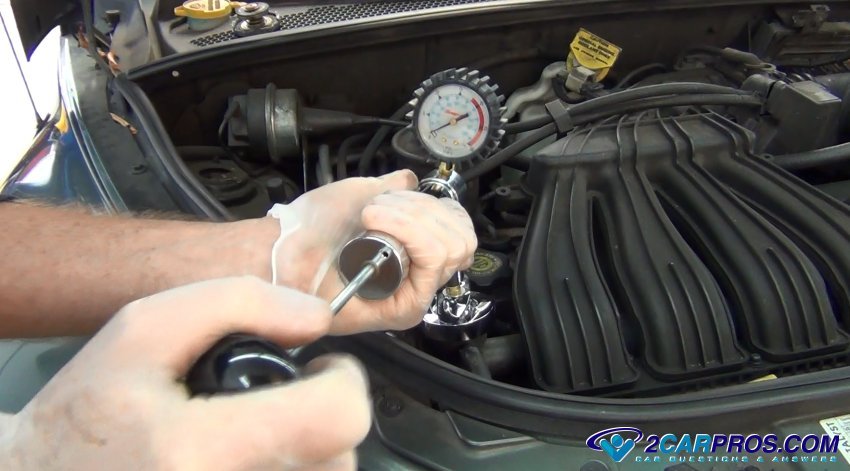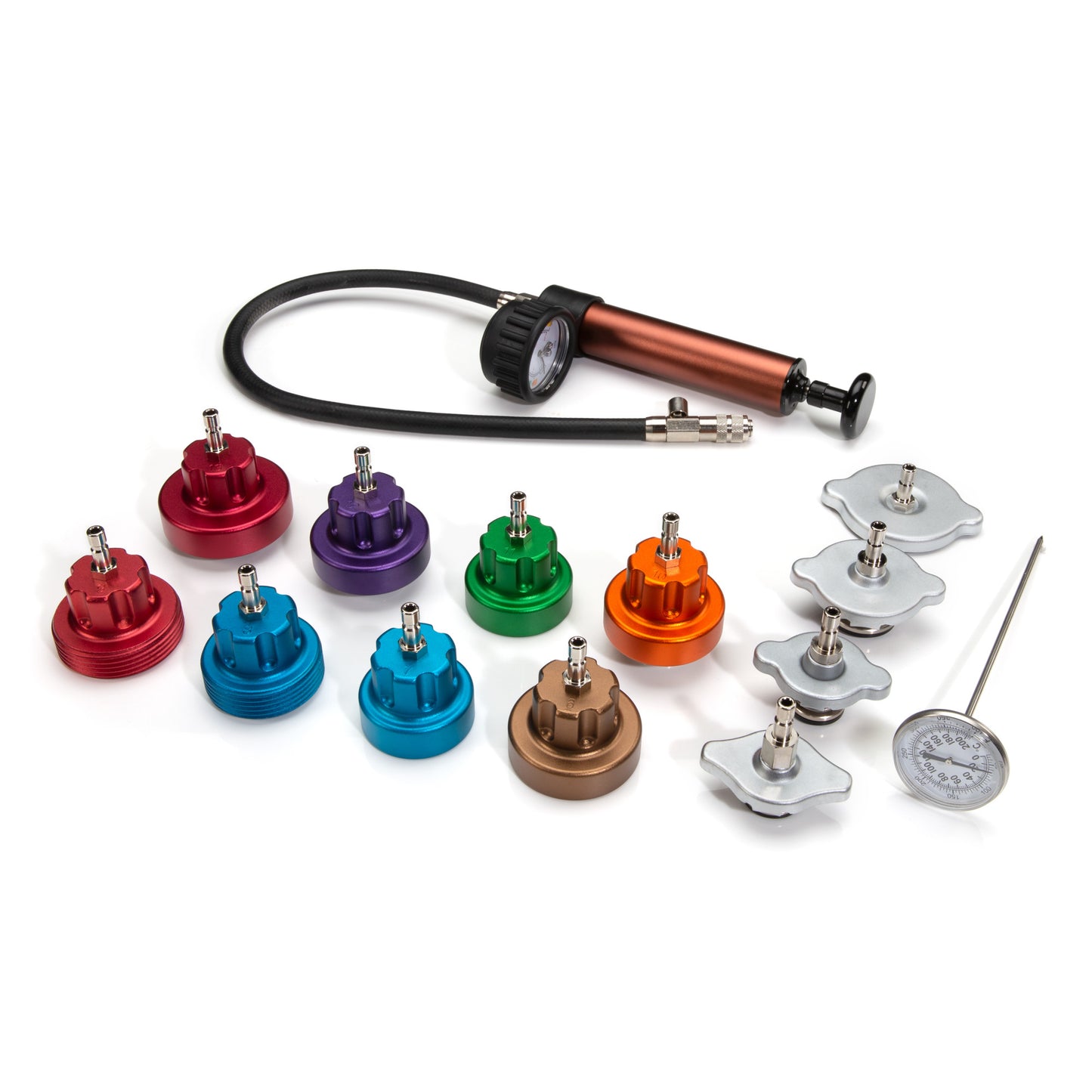Car Coolant Pressure Testers A Comprehensive Guide
When it comes to maintaining your car, the cooling system is essential in preventing overheating and engine damage. However, identifying potential issues with the coolant system can be a challenge without the right tools. This is where a car coolant pressure tester comes in handy. In this guide, we will take an in-depth look at car coolant pressure testers and how they work, their benefits, and how to choose the right one for your needs.
Understanding Coolant System Pressure

Before we dive into the details of coolant pressure testers, it's important to understand the role of pressure in a car's cooling system. The cooling system is responsible for regulating the temperature of the engine by circulating coolant through the engine block and radiator. The coolant absorbs heat from the engine and dissipates it through the radiator, keeping the engine at an optimal operating temperature.
The ideal pressure in a cooling system is between 15-20 psi (pounds per square inch). This pressure is necessary to prevent boiling and maintain the temperature of the coolant. If the pressure drops below the recommended level, it can lead to overheating and potentially cause serious damage to the engine.
Types of Car Coolant Pressure Testers

There are two main types of car coolant pressure testers: manual and electronic. Both types serve the same purpose, but they differ in their method of operation.
Manual Coolant Pressure Testers
Manual coolant pressure testers are typically hand-held devices that require manual pumping to pressurize the cooling system. They consist of a pump, a pressure gauge, and a reservoir for the coolant. These testers are more affordable and widely available, making them a popular choice among car owners.
Electronic Coolant Pressure Testers
On the other hand, electronic coolant pressure testers use a power source to create pressure in the system. They have a digital display that shows the pressure reading, eliminating the need for manual pumping. These testers are more accurate and easier to use, but they also come with a higher price tag.
How to Use a Car Coolant Pressure Tester

Using a car coolant pressure tester is a simple process that can be done in a few easy steps. Here's a step-by-step guide on how to use one:
- Connect the tester to the cooling system. The tester will typically come with a variety of adapters that will allow it to be connected to different types of cooling systems.
- Pump the tester to pressurize the cooling system. The pressure that you need to pump the system to will vary depending on the make and model of your car. It is important to consult your car's owner's manual for the correct pressure.
- Monitor the pressure gauge. If the pressure drops, it indicates that there is a leak in the cooling system.
- Listen for leaks. If you hear any hissing or bubbling sounds, it is likely that there is a leak in the cooling system.
- Inspect the cooling system for leaks. Once you have identified a leak, you will need to repair it before using the car.
It is recommended to perform a coolant pressure test whenever you notice any signs of a potential issue with the cooling system, such as overheating or low coolant levels.
Troubleshooting Coolant System Problems with a Pressure Tester

A car coolant pressure tester is an essential tool for troubleshooting issues with the cooling system. By pressurizing the system, it allows you to identify leaks, blockages, and other problems that may affect its performance. Here are some common problems that can be detected with a coolant pressure tester:
Leaks
Leaks are the most common issue with a car's cooling system. They can occur in various components, such as hoses, gaskets, and seals. A coolant pressure tester can help locate the source of a leak by pressurizing the system and monitoring for any drops in pressure.
Blockages
Blockages in the cooling system can restrict the flow of coolant, leading to overheating. A pressure tester can help identify blockages by detecting any changes in pressure within the system.
Head Gasket Issues
A faulty head gasket can cause coolant to leak into the engine, resulting in severe engine damage. A pressure tester can detect this issue by indicating a drop in pressure while the engine is running.
Benefits of Using a Coolant Pressure Tester
A car coolant pressure tester offers several benefits when it comes to maintaining your car's cooling system. Here are some of the main advantages:
Early Detection of Issues
Regularly testing the cooling system with a pressure tester can help identify any potential problems at an early stage. This allows for prompt repairs and prevents more significant issues from arising.
Cost-Effective
Investing in a coolant pressure tester can save you money in the long run. By identifying issues early on, you can avoid costly repairs or even engine replacement due to neglecting a problem.
Easy to Use
Car coolant pressure testers are designed to be user-friendly, making them easy to use for both professional mechanics and car owners. They come with clear instructions, and most models have adapters that can fit different types of cooling systems.
Safety Precautions When Using a Coolant Pressure Tester

While using a coolant pressure tester is relatively straightforward, it's essential to follow safety precautions to avoid any accidents or injuries. Here are some guidelines to keep in mind:
- Always wear protective gear, such as gloves and eye protection, when working with a coolant pressure tester.
- Never open the radiator cap while the engine is hot. Allow the engine to cool down before performing a pressure test.
- Release pressure slowly from the cooling system after completing the test to avoid any sudden bursts of coolant.
Choosing the Right Coolant Pressure Tester for Your Needs
There are various factors to consider when choosing a car coolant pressure tester. Here are some essential features to look for:
Compatibility
Make sure the tester you choose is compatible with your car's make and model. Some testers come with adapters for different types of cooling systems, while others are specifically designed for certain vehicles.
Pressure Range
Different car models require varying levels of pressure in the cooling system. It's crucial to select a tester that can achieve the recommended pressure for your car.
Accuracy
Electronic coolant pressure testers tend to be more accurate than manual ones. However, if you prefer a manual tester, make sure it has a reliable pressure gauge.
Durability
Investing in a high-quality coolant pressure tester can save you money in the long run. Look for a tester made from durable materials that can withstand repeated use.
Common Coolant System Problems Detected by a Pressure Tester
A coolant pressure tester can help identify a wide range of issues with the cooling system. Here are some common problems that can be detected:
- Leaks in hoses, gaskets, or seals
- Blockages in the radiator or heater core
- Head gasket failure
- Faulty water pump
- Air pockets in the system
- Cracked or damaged radiator
Maintaining Your Coolant System with a Pressure Tester
Regularly testing your car's cooling system can help maintain its performance and prevent any major issues. Here are some tips for maintaining your coolant system with a pressure tester:
- Perform a pressure test every time you change your car's coolant.
- Check for leaks or blockages before long trips or during routine maintenance.
- Inspect the condition of the coolant pressure tester regularly and replace any damaged components.
Conclusion
A car coolant pressure tester is an essential tool for any car owner or mechanic. It allows for early detection of potential issues with the cooling system, saving you time and money. By following the steps outlined in this guide, you can effectively use a coolant pressure tester to maintain and troubleshoot your car's cooling system. Remember to choose the right tester for your needs and always prioritize safety when performing any maintenance on your vehicle.



